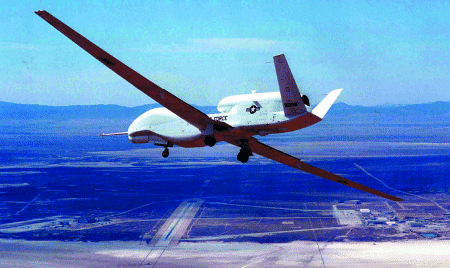Northrop Grumman is optimistic that low rate production of the RQ-4A Global Hawk unmanned air vehicle (UAV) could be authorised by a US Defense Acquisition Board review set for 6 October that should also approve a 12-month engineering and manufacturing development.

Initial production is expected to cover the manufacture of two RQ-4As a year for five years, says Bob Ettinger, Northrop Grumman Global Hawk programme manager. However, Ettinger says, "we expect them to accelerate that".
The US Air Force has already asked Northrop Grumman to study speeding up the programme to avoid restarting production of Lockheed Martin U-2 reconnaissance aircraft, and the company reveals it is studying an expanded role for the UAV alongside the Northrop Grumman E-8C Joint Surveillance Target Attack Radar System (Joint STARS). Northrop Grumman has also considered using the UAV to extend the Boeing E-3 Sentry Airborne Warning and Control System's detection range (Flight International, 1-7 February).
"We have started a study to work with Joint STARS in which the Global Hawk will send imagery back for distribution via the Joint STARS," says Ettinger.
The Global Hawks would operate high over hostile territory, providing data beyond the range of the E-8C. The UAV would be equipped with threat detection sensors which would trigger pre-programmed evasion manoeuvres in the event of a missile attack. The Global Hawk would also be fitted with three towed decoys, the first of which would be trailed out at the start of the most dangerous phase of the mission. The UAV would be "removed from the threat area" when the third decoy is expended, says Ettinger.
The expanded reconnaissance role could lead to a requirement for "up to 200" UAVs, adds Ettinger, who believes this figure "might be rational for the reconnaissance role if you don't include other things".
The RQ-4A is also being considered for use as a "common communications node" to allow US Army and Marine Corps soldiers to communicate via a network of secure cell phones.
Although the Global Hawk advanced concept technology demonstration was recently completed, further tests continue. These include a simulated engine failure and glide back recovery.
Source: Flight International























